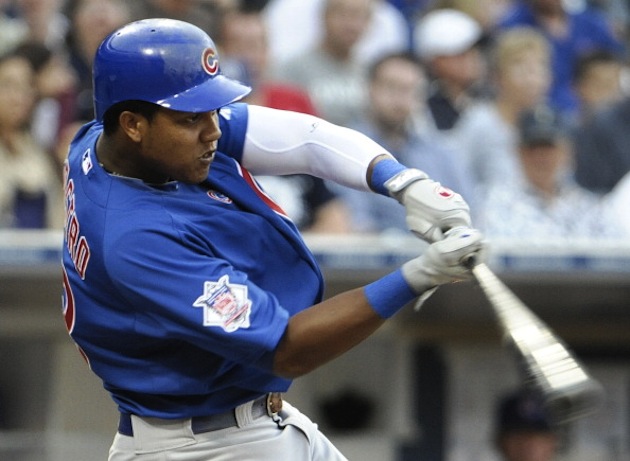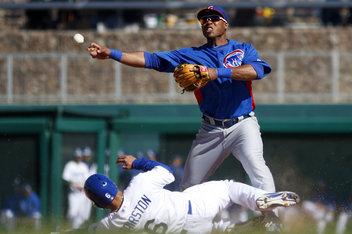
The Mets have a solid foundation of pitching to go with a young core of position players, many of whom emerged as stars in 2014. The team is no longer looking to rebuild, their disenchanted fan base has high expectations and a New York based franchise stocked with farm talent should have no trouble making a high impact acquisition in the offseason. In all reality, the winter spending is questionable, although team COO Jeff Wilpon did state that payroll flexibility is available going into 2015. Regardless, the Mets minor league system is so rich in power pitching that almost any team should be open to making the right deal. It makes more sense to seek out the best talent in the league first before signing someone out of a weak free agent class.
If the Mets are going to part ways with blue chip prospects, it should net a return that will hurdle the team into contention. The player should be young, approaching the peak of their power range and under a team friendly contract for multiple years. The “Red Sox Model” of investing in mid-premium talent works when your home ballpark turns routine fly-outs into doubles and doubles into home runs, but Citi Field’s dimensions don’t offer that luxury. Enter Starlin Castro.
The Cubs’ 24 year old shortstop is a flat out stud at his position and his 2014 performance was certainly worthy of his third All-Star selection. Among all qualified major league shortstops, Starlin was 1st in batting average (.292), 2nd in OBP (.339), 3rd in SLG (.438), OPS (.777) and wOBA (.341). If you look at the list of qualified shortstops under the age of 30, Castro is number one in all those categories.
In 134 games (season shortened by a sprained ankle), he posted 14 home runs (5th) and 65 RBI’s (7th). He played 161 games in 2013 and 162 in 2012, so it’s reasonable to expect an uptick in those figures if he’d played a full season.

The Mets struggled to hit the ball with men on base this season and it was undoubtedly the difference in a long list of close games that resulted in missing the playoffs for an 8th straight season. Castro’s bat has the stats to qualify him as a difference maker in this category. For his career (2010-2014), he has a (.297) batting average and a (.342) OBP when men are on base.
Equally important is the fact that his production doesn’t dip at Citi Field. It’s rare for any player not wearing a Nationals uniform to maintain their home field production in Flushing, so how does Castro stack up? Starlin played his first game at Citi Field in 2011 and has posted encouraging numbers there since. His career (.304) batting average and (.429) slugging percentage at Citi deviates in an upward direction from his overall career numbers, but only slightly, and certainly not enough to be considered skewed. His ability to hit for average with plus power in Queens should be the most relevant stat line of them all.
The cost is where the debate lies. The asking price in assets is going to be steep and it should be, Castro is a top young talent at a premium position for a relatively cheap price. The five years and $43 million left on his very team friendly contract comes with a one-year option for 2020, when he’ll only be 30.
The Cubs aren’t going to settle for a straight up one-for-one trade because that would be a clear signal that GM Theo Epstein is unfit for his job. Realistically, they’ll want some combination of a highly touted front end starter (Zack Wheeler/Jacob deGrom/Noah Syndergaard) and a not quite elite, but still top prospect (Rafael Montero/Steven Matz). The Mets might be able to work a Kevin Plawecki into the conversation in order to take one of the top end starters off the table, but the Cubs aren’t totally devoid at catcher and they’re deep at every other position on the field, so it’ll likely come down to strictly pitching.
The Cubs’ bullpen ranked 15th in ERA and gave up the 8th most earned runs in the majors this season, so a top end reliever could be a piece, with a front of the rotation starter, to push a deal over the top. But that depends on the value Chicago will get initially. For instance, any deal that includes Matz as the second piece instead of Montero is probably where the Mets will end their offer.
My Take
It’s not just the production Castro would bring, but the attention he would take off of David Wright, who desperately needs to revitalize his output after an injury riddled season that included a number of career lows. Having Starlin in the #2 hole with Lucas Duda cleaning up behind him would create a lot of opportunities for David, who has carried this offense plenty of times before. There’s lots of time left to evaluate all the options the Mets have, but if Sandy Alderson is going to acquire a proven top talent at shortstop, Castro is where the conversation should start.















